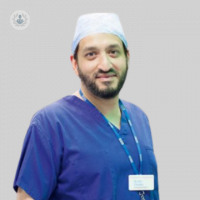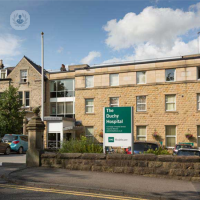Gastric cancer surgery
Professor Yirupaiahgari Viswanath - Surgery
Created on: 11-13-2012
Updated on: 09-11-2023
Edited by: Conor Dunworth
What is gastric cancer surgery?
Gastric cancer is a growth of abnormal and malignant (cancerous) cells in the stomach. Gastric cancer is difficult to detect in its early stages and sometimes, there are no symptoms. In general, when the symptoms occur, the tumour can be well advanced. The most common symptoms are heaviness after meals, heartburn, abdominal pain, nausea, vomiting, loss of appetite and weight, difficulty swallowing or bleeding, among others
Gastric cancer surgery is part of stomach cancer treatment. The most common treatment is the removal of part or all of the stomach, and when necessary, other organs or lymph nodes that have been affected. Gastric surgery is not always the definitive solution to cure the disease, but it can also be used to reduce the symptoms and damage it causes in the body.

Other treatment options include radiotherapy and chemotherapy. A multidisciplinary team is required and this can involve oncologists, radiation oncologists, pathologists, radiologists, surgeons and gastroenterologists.
What does it consist of?
This surgery consists of removing the cancer, the nearby lymph nodes and part of the stomach – the amount of tissue removed depends on the severity of the disease. The stage of the condition at the time of diagnosis and the position of the cancer is key to determining the most effective surgery.
When undergoing a subtotal (partial) gastrectomy, or a total gastrectomy, your surgeon might recommend open surgery or keyhole surgery.
If the cancer has advanced to an incurable state, a patient can be offered palliative surgery which consists of alleviating cancer symptoms. This surgery prevents bleeding from the tumour and the tumour blocking the stomach.
Types of surgeries
- Endoscopic resection: Endoscopic mucosal resection and endoscopic submucosal resection can only be performed to treat some very early-stage cancers. This type of surgery consists of inserting an endoscope through the mouth, down the throat and into the stomach and then removing the tumour and some healthy tissue surrounding it.
- Subtotal (partial) gastrectomy: This operation is recommended if the cancer is found in the lower section of the stomach, but the procedure can be used in some cases where the upper section of the stomach needs removing.
- Total gastrectomy: If the cancer has spread throughout the entire stomach, a total gastrectomy will be performed and this involves removing the entire stomach, nearby lymph nodes and the surgeon may also need to remove parts of other nearby organs such as the oesophagus, intestines or pancreas. After the removal of the stomach, the oesophagus is connected with the small intestine to allow the patient to eat.
- Palliative surgery: For people with incurable stomach cancer, surgery is used to help control the cancer or relieve symptoms. This aims to prevent bleeding, pain, or blockage of the stomach from the tumour.
Preparation for surgery
You will enter the hospital several hours before surgery and have your medical history and blood checked. You will need to fast for at least 8 hours before surgery.
Aftercare
After the operation, you are taken to intensive care or a high dependency recovery unit and you’ll be given anaesthetic and painkillers to manage pain. Surgical incision wounds are dressed and you’ll be advised on how to manage the healing wounds and avoid infection once you leave.
It’s not possible to eat or drink after surgery, and you will be given fluids through a drip for 24-48 hours. In around a week or two after surgery, you can expect to be able to eat small amounts. A dietician will advise you on what to eat once you are discharged from the hospital. Patients can experience side effects such as nausea, heartburn, diarrhoea, and abdominal pain and this is due to food moving too quickly through the intestines.









